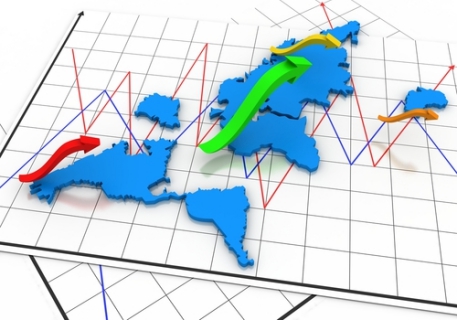U.S. consumers’ financial optimism dipped for the second consecutive month in March, data from the Financial Optimism Index show. But how confident are they generally, and how do folks in other countries feel about their futures?
It appears to be a bit better and rising, and perhaps U.S. consumers aren’t so gloomy after all, as separate research for the first three months of year from Nielsen suggests.
 During this year’s first quarter, global consumer confidence returned to a pre-recession level with an index score of 96, the highest score since the first quarter of 2007 and a two-point increase from the previous quarter and up three points from Q1 2013, according to Nielsen.
During this year’s first quarter, global consumer confidence returned to a pre-recession level with an index score of 96, the highest score since the first quarter of 2007 and a two-point increase from the previous quarter and up three points from Q1 2013, according to Nielsen.
Established in 2005, the Nielsen Global Survey of Consumer Confidence and Spending Intentions measures consumer confidence, major concerns and spending intentions among more than 30,000 respondents with Internet access in 60 countries. Consumer confidence levels above and below a baseline of 100 indicate degrees of optimism and pessimism.
Among the positive signs, perceptions of local job prospects improved in all regions except Latin America, recessionary sentiment improved in 68 percent of markets, and discretionary spending intentions increased in all regions, the polling company said in its report summary.
Advertisement: Scroll to Continue
Unlike the findings on consumer financial confidence from the Financial Optimism Index done by AOL and the Consumer Bankers Association, Nielsen says U.S. consumer confidence showed an increase, by six points, to an index score of 100. Among the other biggest countries, confidence remained flat in China with a 111 score, increased one point in Japan to 81, increased four points in Germany to 99, increased eight points in France to 59 and increased three points in the U.K. to 87.
“This puts U.S. consumer confidence at its highest level since 2007, while Germany and Japan consumer confidence are at their highest levels since 2005,” Nielsen said.
In the latest survey, conducted Feb. 17 to March 7, consumer confidence globally increased in 60 percent of markets Nielsen measured, up from 43 percent the previous quarter.
With a score of 124, the same as the pervious quarter, Indonesia reported the highest consumer confidence for the fifth consecutive quarter. Croatia and Italy each reported the lowest consumer confidence scores at 45, an increase of one point each Q4 2013. Egypt, at 87, and Switzerland at 104, reported the largest quarter-on-quarter increases of 11 and 10 points respectively.
Ukraine, in a dispute with Russia over its takeover of Crimea and with an index score of 56, reported the biggest quarterly decline, which was by seven points, Nielsen said.
In March, the CBA/AOL Financial Optimism Index for U.S. consumers dropped to -6.2, down 3.6 points from -2.6 in February. In October last year, when the U.S. government shut down, the index hit -24.6. It rose to -8.8 a month later when the government reopened, peaking at +4 in January based on positive economic news.
The value of the index for each month is calculated as the percentage of respondents who are net pessimistic subtracted from the percentage of respondents who are net optimistic in that month. The index can range from +100 (all respondents optimistic) to -100 (all respondents pessimistic), with zero being the midpoint of the index’s range. The index tracks optimism through agreement with four statements in a survey.





